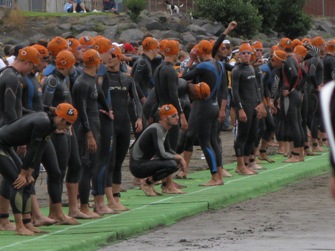Athlete Peaking Explained- How To Hit Your Goal
Posted by Matt Russ on 30th Sep 2016
 Imagine yourself a big game hunter that would like to add a rare animal to
your trophy collection, yet you may only use a single bullet and your elusive
prey appears but once per year. Success would depend on you being at the right
place, at the right time, and hitting your target precisely; a very delicate
balance. The peaking process is very similar.
Imagine yourself a big game hunter that would like to add a rare animal to
your trophy collection, yet you may only use a single bullet and your elusive
prey appears but once per year. Success would depend on you being at the right
place, at the right time, and hitting your target precisely; a very delicate
balance. The peaking process is very similar.
Peaking is simply being at your physical best at the same time as your goal (peak) race(s). It requires foresight and planning, as well as knowledge of what type of training should occur when. Although you may have several peaks in your season, you can really only be at your best once per season.
The first step of the peaking process is planning your race calendar. You should put your race events into 3 categories, A, B, and C. A events are your peak events you will design your annual training plan (ATP) around. You would like to do well at your B events, and you will rest yourself for them, but you will not adjust your ATP to accommodate a B race. B races are great training races that are similar in structure to your A races. C events are casual training events you will use simply for work outs, and can be of a totally different variety than your goal events. You do not care about the outcome of these events; they are for fun.
It is best to clump you A events into 2-3 week blocks or widely separate them into different peaks of 8-12 weeks. In this case each subsequent peak would lead to a higher state of fitness. Your A events should be similar or better yet the same format (ex. sprint triathlon) for optimal results. If your A events are a duathlon, triathlon, and a marathon, your training will not be focused throughout the season and you will have to switch training substrates for each event. It is more efficient to train to be great at one sport than to be good at many, but it is a personal decision.
Once you have established your A events the next step is to plan your training leading up to your peak(s). Your training should progress through various phases, each with specific work out types and purpose. Your training will move from the general to the specific; lower intensity to higher. The first phase is base in which most of your work outs will be at an aerobic level. This is the period a lot of athletes have a problem with. It is counterintuitive to go slower to get faster, but that is exactly what must occur. In base the focus should be strength building, technique and leg speed, endurance, and aerobic efficiency. The next phase is general preparation. In GP you will begin to incorporate more sustained efforts at higher intensities. Volume is greatest during GP. Aerobic capacity intervals, sustained strength endurance and lactate threshold work will begin in this phase. Next is race specific (RS) training in which race speeds and abilities are the focus. Training will closely match race intensities and should address particular weaknesses such as climbing. In this phase you will tailor your training specifically for your upcoming A event. It is also the most intense training you will perform and requires greater rest and recovery between work outs. You are more likely to be injured in this phase, so great care must be taken to not over reach or over train. All aspects of your A events should be considered and incorporated into your training, transitions, course elevation, technical aspects, and race strategy. You must taper your intensity and volume leading up to your A events, and take a rest or transition period after them to allow full recovery.
As you can see a lot of things must come together in order for the peaking process to occur. It is crucial that you remember you can only maintain a peak level of fitness for a short period of time. Certain types of training must only occur in the 4-6 weeks leading up to your A events. If you attempt extend fitness beyond this time frame, or train well before it, your fitness will degrade, mental burn out could occur, and injury becomes more likely.
I often hear (insert talented athlete's name here) is already training hard and fast for next season. You can train hard, and you can train smart, but if you train hard and smart you will maximize your results. Remember, you only have a single bullet per season and you do not want to be out of ammunition when you need it most.


